How Your Insurance Can Help Pay for Your New Roof
Your roof is one of the most important elements of your home, and it must be well-taken care of at all times. More so, you must invest in quality materials and an experienced contractor to install it well for it to last for decades. This is why, in Arizona, many people opt for tile as their roofing material, as it’s known to last for not just decades, but up to 100 years!
That said, some factors can shorten the lifespan of a roof, which may ultimately end up in replacement. Over time, your tile roof will require regular maintenance and a few repairs, especially after inclement weather. But there will come a day where your tile roof will need a replacement, where no repairs can fix it anymore.
When will you know when that time is? Read on as we show you how to tell when a tile roof needs to be replaced.
How to Tell When a Tile Roof Needs to Be Replaced
Before learning the signs on how to tell when a tile roof needs to be replaced, let’s delve a bit deeper into the lifespan of a tile roof.
The tile roof’s lifespan would depend on various factors. But on average, tile roofs can last for 30-50 years, with some lasting up to 100 years. However, signs of wear and tear may begin around 15 years after the initial installation. Again, several factors would contribute to the lifespan, like Arizona’s climate, underlayment quality, and environmental hazards that may cause decay and damage.
One example is birds nesting on the roof. As sweet as it looks, you must remove these nests and transfer them to another safe area, as bird droppings contain acid that damages the tiles. The same goes for keeping trees and other debris away from the roof.
This is why it’s crucial to always have your roof inspected, may it be on your own (safely) or through your local roofing contractor. That way, you can discover any signs of damage that can be repaired or any signs that show your roof is in dire need of replacement.
With that said, here are the following signs to tell when a tile roof needs to be replaced:
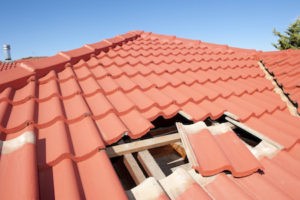
Roof’s Age
If your roof goes past 50 years old, even if it shows no problems from the naked eye, then it’s still best to have it replaced before bigger issues arise. Has the roof been inspected by a roofing contractor to see if the roof can still last, or if they recommend a replacement?
An old roof is more prone to damage from weather, falling trees, moisture penetration, and the like. This may cause serious issues within your home, so it’s best to prevent that by replacing an old roof.
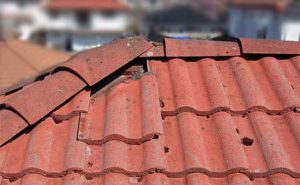
Broken and Missing Tiles
Gravity, poor installation, winds, physical damage, and intense weather are the most common causes of broken and missing tiles. The same goes for loose tiles. Weak roofs with missing and damaged tiles can cave in on you, which is very dangerous.
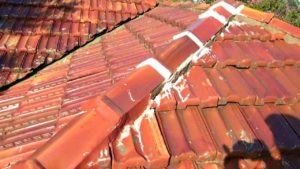
Sagging Tiles
The top of the roof must follow a straight line along the ridge. If you notice a sag or saddleback in the middle, this may indicate structural damage, causing the roof to collapse if not detected and resolved early on.
Sagging roofs may be due to frequent moisture exposure, improper installation, snow, and ice, or faulty roofing materials.
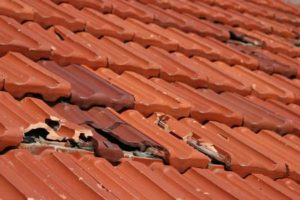
Any Mold, Moss, and Algae Between Tiles
When conducting a roof inspection, you must look out for mold, moss, and algae. If you see any of these outside your roof and between the tiles, it may cause the tiles to force themselves apart and create a gap. That gap can let in water into your home, causing bacteria and fungi growth and water damage.
If the mold, moss, and algae growth is too intense, then your tile roof may require a replacement.
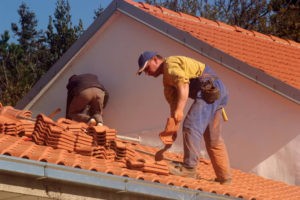
Light Coming Through the Roof
Try to switch off all the lights in the upper room of the house and look up to the roof regularly. You can do this during sunset or evening. If you notice light coming in from the roof, that may indicate holes and cracks on the roof or tiles.
You must attend to those cracks and gaps ASAP. If there are too many of them and the tiles look too damaged, a roof replacement may be recommended.
Falling Mortar
Mortar is used for bedding roof junctions like ridges and verges. You must check the mortars frequently, as they have a limited lifespan. You must also watch out for any early signs of degeneration because of extreme weather changes.
The ridges and verges are susceptible to cracking and may be dislodged, resulting in mortars falling off if the winds are strong enough. Falling mortars are a huge issue for older roofs, indicating the roof is nearing its lifespan and requires replacement.
Damaged Flashing
Flashing is a material placed around objects protruding from roofs, like your roof vents and chimney. It is designed to prevent water movement in the roof by averting water away from the seams where runoff is greater.
The flashing may be damaged due to caulking material underneath drying out or material deterioration from oxidation and weather. Loose or damaged flashing may cause extensive damage like mold and mildew growth, rotten wood, and the like. While some flashings can be repaired, others will require a whole replacement.
Wrapping It Up
And there you have it! These are the ways how to tell when a tile roof needs to be replaced. While it may be a bit pricey to have it replaced, if the signs are there, then it’s better to do it as soon as possible to avoid bigger problems.
If you’re looking for a contractor to perform roof inspections and replacements around Arizona, we’ve got you covered. Contact us now at Stradling Roofing for more information.
